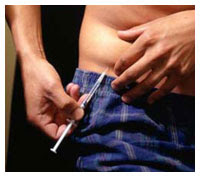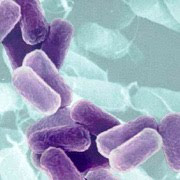
A University of Alberta researcher has discovered a potential breakthrough for premature ejaculation--the most common sexual dysfunction in men--with a drug usually used to treat bi-polar or anxiety disorder.
Dr. Pierre Chue, a psychiatry professor at the U of A, has found success in treating premature ejaculation (PE) with the use of gabapentin, better known by the brand name Neurontin. Chue writes about his findings in the September issue of the "Canadian Journal of Psychiatry."
"This disorder affects almost 40 per cent of males--it is even more common than erectile dysfunction--yet it is not talked about much and there has been very little research on it," said Chue.
The essential feature of the disorder is persistent ejaculation with minimal sexual stimulation before or shortly after penetration and before the person wishes it. PE is believed to be a neurobiological phenomenon involving primarily a disturbance of serotonin receptor function. Currently, physicians prescribe medications that are known to influence these receptors--selective serotonin reuptake inhibitors or SSRIs--that delay ejaculation but these antidepressants also come with negative side-effects..
In his report, Chue cites a case study in which a 40-year-old man diagnosed with PE received minimal effectiveness from different techniques--the use of a condom with topical anesthetic and different antidepressant drugs--aimed to improve the disorder. The drugs resulted in such side effects as restless legs, headaches, decreased libido or accelerated ejaculation. The man "had previously found that alcohol produced satisfactory ejaculatory delay with no loss of erectile capacity, but clearly this was not a feasible regular option," says Chue. A trial of gabapentin taken one to two hours before intercourse proved effective. Higher doses prolonged ejaculation even further but also caused drowsiness.
Dr. Chue is not certain how gabapentin works to improve PE but believes it has to do with the drug's ability to increase aminobutyric acid (GABA), the most important inhibitory neurotransmitter in the brain. Since there are currently no specific treatments for PE, the use of gabepentin to prolong ejaculation warrants further study, says Chue, particularly for those men where other therapies are ineffective or poorly tolerated.
Meanwhile, Chue is looking for people to participate in a clinical trial he is running that will use an SSRI-type drug called dapoxetine, to learn its effects on men with PE. This is an SSRI with a very short half-life that has been shown in clinical trials to delay ejaculation without the usual SSRI side effects.
Source: Science Daily























